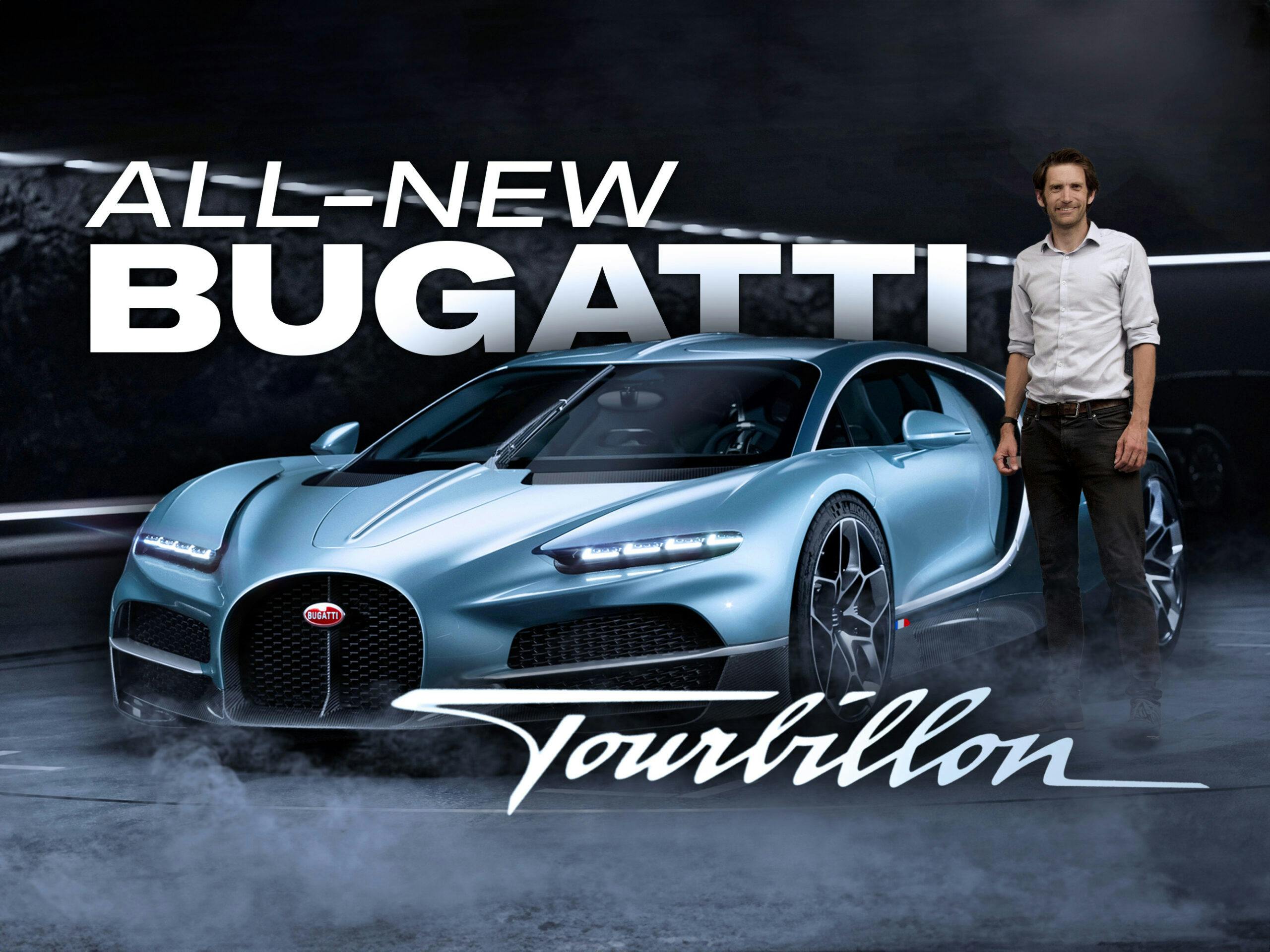Media | Articles
The Driver’s Seat: Henry Catchpole on the Bugatti Tourbillon
This is the new Bugatti Tourbillon, the successor to the Veyron and the Chiron, due to be delivered in 2026. Its looks are very much evolution rather than revolution, but unlike its predecessors the Tourbillon doesn’t have a turbocharged W-16 engine, instead it has a naturally aspirated, 8.3-liter V-16 developed in partnership with Cosworth. This produces 1000hp on its own but in conjunction with three electric motors the Tourbillon has a combined hybrid system output of 1800hp.
As you can hear in this video, it is a pretty incredible sounding engine, revving to 9000rpm. It’s a distinctive sound too, and for comparison we’ve included the soundtracks of a couple of its naturally aspirated hypercar rivals—the 6.5-liter V-12 from the Aston Martin Valkyrie and the 3.9-liter V-12 from the GMA T.50 (both also developed with Cosworth).
Bugatti’s Director of Design, Frank Heyl, talks Henry Catchpole around all the fascinating exterior details of the €3.8M (approximately $4M U.S.) Tourbillon, but we think the interior is perhaps even more spectacular. With clear influence and inspiration taken from mechanical watches, the titanium dials are wonders to behold.


And talking of watches, the car’s name, Tourbillon, means whirlwind in French, but it is a word widely associated with a complicated mechanism found in watches. As Henry explains, with the help of a Ulysse Nardin, it was invented in 1795 to negate the impact of gravity and improve the accuracy of timekeeping in pocket watches.

Of course, this being a Bugatti, it is incredibly fast, with a top speed of 276mph (445kph). It is also capable of 0-62 mph in two seconds, 0-124 mph in under five seconds, 0-186 mph in under 10 seconds and 0-248mph in under 25 seconds. But in the age of the hyper EV, led cars like the the Bugatti’s cousin, the Rimac Nevera, pure performance doesn’t seem to carry the sway that it once did. Where does that leave the Tourbillon? Catchpole thinks that the answer can be found in the aftermath of the quartz crisis that hit the watch market in the 1970s.
***
Check out the Hagerty Media homepage so you don’t miss a single story, or better yet, bookmark it. To get our best stories delivered right to your inbox, subscribe to our newsletters.
Marketplace
Buy and sell classics with confidence






